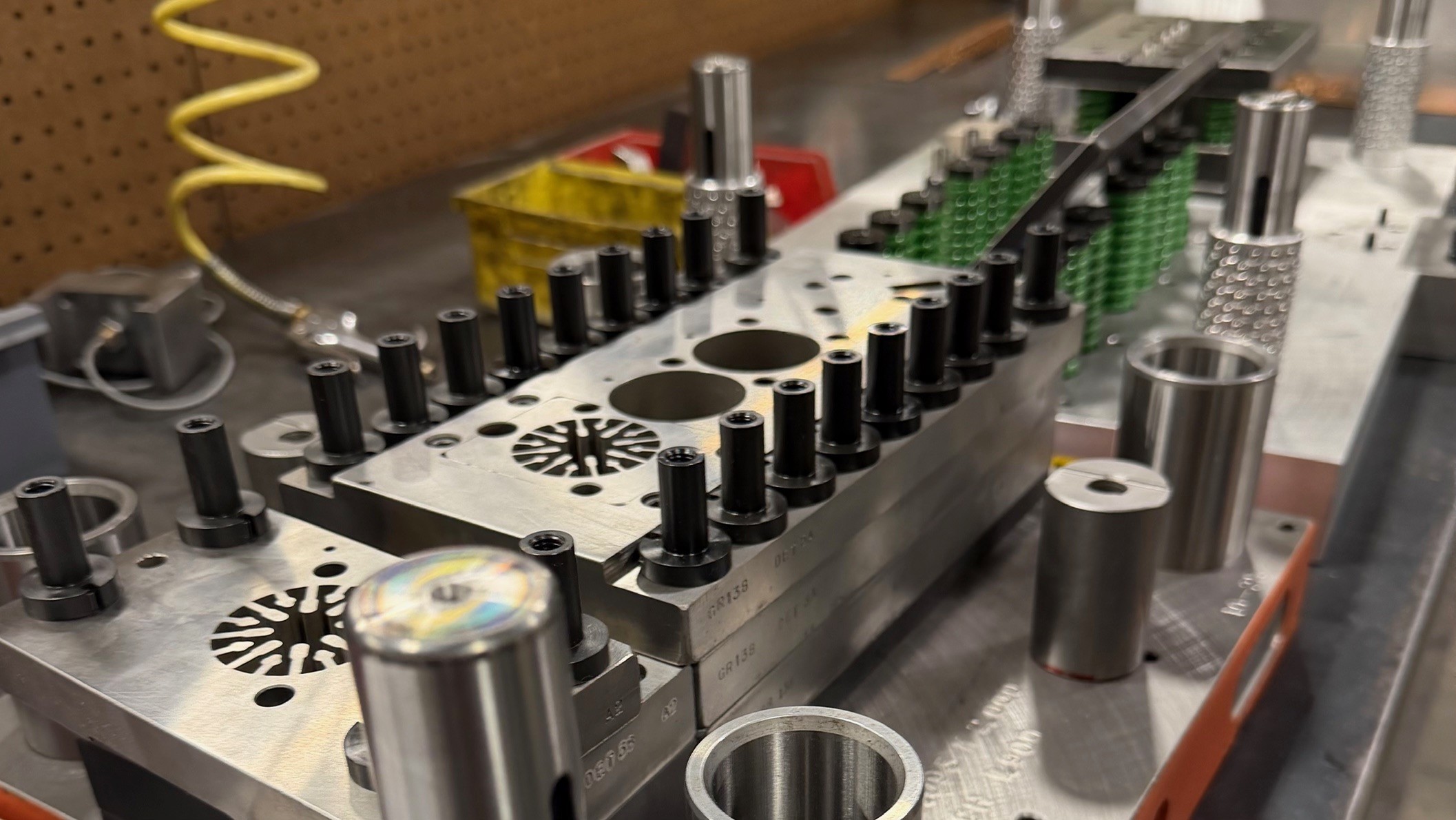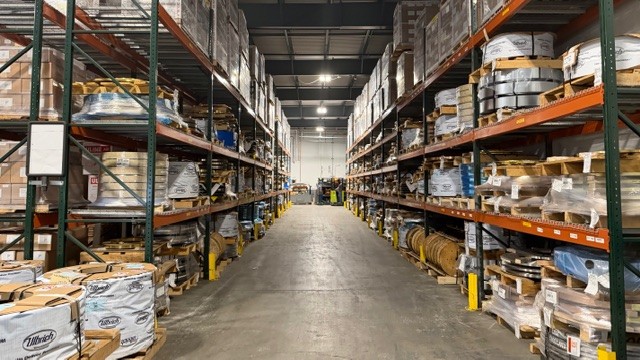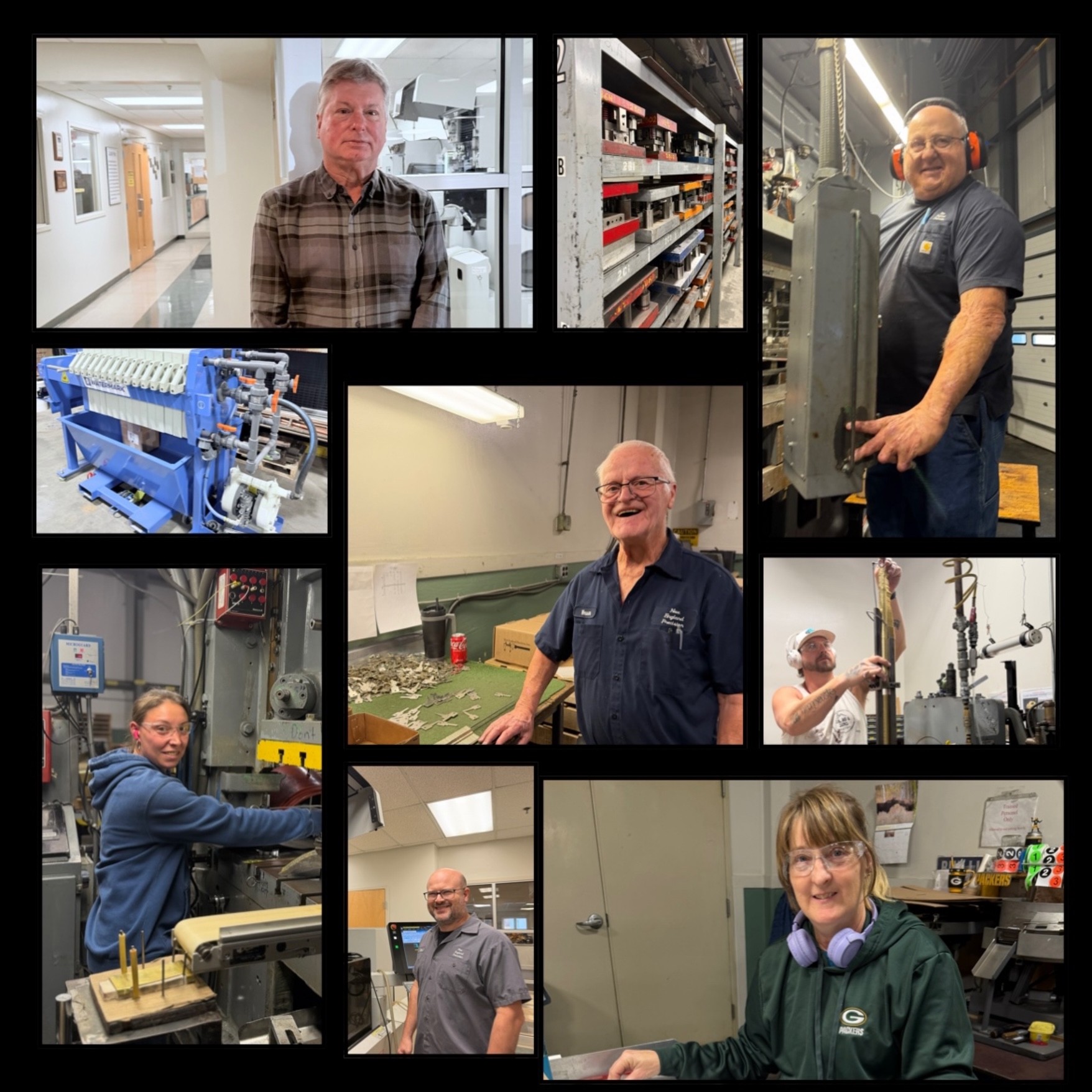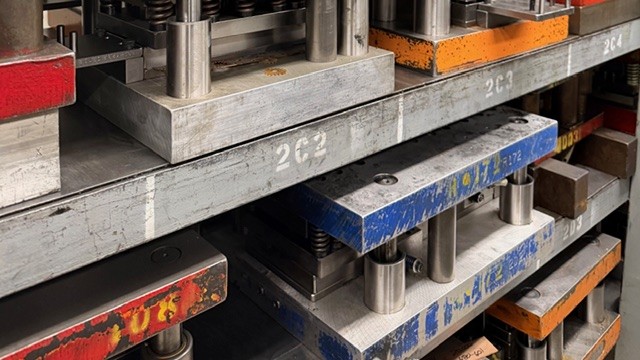A tour through the tool rooms, presses, and finishing lines.
Plant Engineer Bob Eccher was kind enough to walk me through New England Precision’s Beanville Road facility recently. I want to share what I gleaned during my 90-minute tour of the company that makes that cool little metal dental floss cutter we all use daily - at least that's what we tell our dentist!
The plant occupies roughly 75,000 square feet of production, storage, and shop space. There's an industrial campus feel inside. The basic gist is that they turn coils of metal into tens of millions of stamped components each year.
These components include sprinkler nozzles, threaded sprinkler fittings, keys and lockbox parts, electrical contacts, and other high-volume precision stampings that serve fire-protection manufacturers, medical assemblies, and everyday hardware makers across the country.

How parts move through the plant
NEP runs a straightforward production line: coils of metal feed press lines where tools form and cut parts station by station, and finished pieces are tumbled, rinsed, dried and packed for shipment.
The tool room keeps those forming tools in shape—small fixes there prevent big problems on the line. Machines cut complex shapes and presses produce high-volume components for safety and industrial customers. After finishing and inspection, parts are sorted, packed and stored so customers can call in rush orders.
On the environmental side, sand filtration and membrane filtration help manage wastewater, and an ARPA-funded evaporator and filter press, soon to arrive, will further reduce discharge volumes and protect municipal capacity.
A timely investment
It began during my first week with the town, more than three years ago, as an urgent deal that had to move quickly. Partnering with GMEDC, we helped New England Precision secure about $330,000 in ARPA funding to reduce the metal load entering Randolph’s wastewater system. At the time NEP’s discharges were pushing municipal influent toward the allowable limits for copper and lead, which constrained our ability to accept new industrial customers and risked regulatory problems.
The grant funded engineered pretreatment, testing, installation support, and the purchase of a new evaporator—measures that are expected to reduce NEP’s metals discharge by nearly 90% once the work is complete. The project is ongoing and is scheduled for completion by early summer 2026, and it’s worth the effort: safer wastewater, preserved capacity for NEP’s growth, and a clearer path for other manufacturers to locate or expand in Randolph.

Rewarding careers
What stood out on the tour was how consistently satisfied and grateful employees sounded. Operators, finishers, press hands and packers all praised steady work, predictable schedules, and a supportive workplace culture.
Bob described NEP’s family-friendly scheduling and solid benefits, and pointed to the company’s investment in staff well-being. He also emphasized President and founding member Bruce Uryase’s people-first approach: “Bruce loves to reward hard workers with raises when he sees solid potential and good character.” That hands-on leadership, along with long tenures and deep institutional knowledge, keeps vintage presses productive and troubleshooting fast. Across departments, the refrain was the same: people like their jobs and value working for a leader who notices effort and character. See current job openings.
Small technical details, bigger economic impact
Bob’s tour highlighted tiny shop practices that reveal Randolph’s industrial resilience. A tool-room chart that tracks die life by production runs — and the ability of a machinist to regrind a worn punch and ship the job the same day — shows how shop know-how turns into reliable lead times for customers.
The plant’s human rhythms matter as much as the machines: clear shift handoffs, handwritten setup notes, and careful maintenance logs keep downtime low and let vintage presses run alongside modern equipment without missing a beat.
Those operational strengths tend to ripple through the local economy. When NEP wins a larger order, contractors, tool vendors, freight providers and Main Street businesses all feel it — a reminder that manufacturing anchors more than paychecks; it sustains a whole ecosystem of services that keep a town working.

The future
Bruce laid out the main pressures NEP faces: shifting trade rules, rising metal costs, and a tight labor market. Much work uses a copper-heavy alloy (510 phosphor bronze), so material price swings and tariffs quickly raise costs. About 60% of NEP’s jobs serve fire-protection makers, which amplifies those effects.
Those uncertainties have made planning the 25,000 sq ft addition harder: contractor bids move with material and labor prices, and some customers delay new tooling until trade and tariff questions settle. Still, NEP’s deep tooling know-how, spare-parts inventory, and experienced staff mean the shop can ramp up when demand returns.
That practical resilience—weathering market swings, keeping skilled people, and staying ready to scale—is why NEP matters to Randolph’s economy. Through the ups and downs, Bruce Uryase and his team have kept the presses running and jobs steady. We’re proud to call NEP one of our own. Thanks, Bruce!



